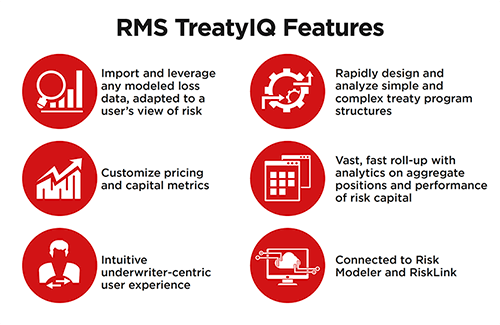As treaty underwriters prepare to navigate another challenging renewal season, compounded by an uncertain economic outlook, many are looking to new technological solutions to help them capitalize on nascent optimism around rates and build sustainable profitability. EXPOSURE explores the importance of reliable marginal impact analytics to bias underwriting decisions in favor of diversification
The fall of investment profits for insurance and reinsurance companies as a result of the impact of COVID-19 on financial markets is likely to encourage an upswing in reinsurance pricing. One of the factors that facilitates a hardening market is low investment returns, making an underwriting profit even more of an imperative.
As the midyear renewals approach, reinsurance companies are cautiously optimistic that the reinsurance rate on line will continue on an upward trend. According to Willis Towers Watson, pricing was up significantly on loss-affected accounts as of April 1, but elsewhere there were more modest rate rises. It suggests that at this point in the cycle reinsurers cannot count on rate increases, presenting market pricing uncertainty that will need to be navigated in real time during the renewals.

In the years of weaker market returns, investment in tools to deliver analytical rigor and agile pricing to underwriters can be difficult to justify, but in many cases, existing analytical processes during busy periods can expose blind spots in the assessment of a cedant portfolio and latency in the analysis of current portfolio risk positions.
These inefficiencies will be more pronounced in the current work-from-home era and will leave many underwriters wondering how they can quickly identify and grab the best deals for their portfolios.
Reducing Volatility Through the Cycle
Both parts of the underwriting cycle can put pressure on reinsurers on underwriting decisions. Whether prices are hardening or softening, market forces can lead reinsurers toward higher volatility.
“Part of the interplay in the treaty underwriting guidelines has to do with diversification,” explains Jesse Nickerson, senior director, pricing actuary at RMS. “Underwriters generally want to write risks that are diversifying in nature. However, when rates are low and competition is fierce, this desire is sometimes overwhelmed by pressure to put capital to use. Underwriting guidelines then have a somewhat natural tendency to slip as risks are written at inadequate prices.
Underwriters generally want to write risks that are diversifying in nature. However, when rates are low and competition is fierce, this desire is sometimes overwhelmed by pressure to put capital to use
Jesse Nickerson
RMS
“The reduced competition in the market during the period of low profitability triggers increases in rates, and the bounce upward begins,” he continues. “As rates rise and profitability increases, another loosening of underwriting guidelines can occur because all business begins to look like good business. This cycle is a challenge for all of these reinsurance companies to try and manage as it can add significant volatility to their book.”
Tools such as RMS TreatyIQ™ help underwriters better carry out marginal impact analytics, which considers the view of risk if new books of business are included in a treaty portfolio. Treaty underwriters are typically tasked with balancing the profitability of individual treaties alongside their impact to aggregate portfolio positions.
“One of the things that underwriters take into account as part of the underwriting process is, ‘What is the impact of this potential piece of business on my current portfolio,’” explains Oli Morran, director of product at RMS. “It’s just like an investment decision except that they’re investing risk capital rather than investment capital.
In order to get insight into marginal impact, treaty underwriters need to have a view of their portfolio in the application, and not just their current portfolio as it looks last week, month or quarter, but how it looks today
“In order to get insight into marginal impact, treaty underwriters need to have a view of their portfolio in the application, and not just their current portfolio as it looks last week, month or quarter, but how it looks today,” he continues. “So, it collects all the treaty contracts you’ve underwritten and rolls it up together to get to your current portfolio position.”
Based on this understanding of a reinsurer’s aggregate risk position, underwriters are able to see in real time what impact any given piece of business would have, helping to inform how much capacity they are willing to bring to bear – and at what price. As reinsurers navigate the current, asymmetric market renewals, with the added challenge that increased home-working presents, such insight will allow them to make the right judgments based on a dynamic situation.
“Treaty underwriters can import that loss data into TreatyIQ, do some quick analysis and ‘math magic’ to make it work for their view of risk and then get a report in the app that tells them profitability metrics on each of the treaties in the structure, so they can configure the right balance of participation in each treaty when quoting to the broker or cedant,” says Morran.
An Art and Science
Relationships have always been a central part of treaty underwriting whereby reinsurers select cedants to partner with based on many years of experience and association. Regardless of where the industry is at in the market cycle, these important bonds help to shape the renewal process at key discussion points in the calendar.
New tools, such as the TreatyIQ application, are enhancing both the “art” and ”science” parts of the underwriting equation. They are reducing the potential for volatility as underwriters steer portfolios through the reinsurance cycle while harnessing experience and pricing artistry in an auditable way. While much of insurtech has until now been focused on the underlying insurance market, reinsurers are beginning to benefit from applications that offer them real-time insights.
An informed approach can help identify the most profitable accounts and steer underwriters toward business that best complements their company’s existing portfolio, overall strategy and risk appetite. Reinsurance underwriters can now make decisions on whether to renew and what pricing to set based on a true understanding of what one risk sitting on their desk has the ability to do to the risks they already hold.
 With hundreds of treaty programs to assess during a busy renewal season, such insights support underwriters as they decide which deals to underwrite and what portion of each treaty to take on. A constant challenge for treaty underwriters is how to strike the right balance between managing complex and often longstanding relationships with cedants and brokers, while at the same time ensuring that underwritten business complements an existing portfolio.
With hundreds of treaty programs to assess during a busy renewal season, such insights support underwriters as they decide which deals to underwrite and what portion of each treaty to take on. A constant challenge for treaty underwriters is how to strike the right balance between managing complex and often longstanding relationships with cedants and brokers, while at the same time ensuring that underwritten business complements an existing portfolio.
Maintaining underwriting discipline while nurturing all-important client relationships is a more straightforward task when there is data and insight readily available, says Nickerson. “Much of the strength of TreatyIQ is in the efficiency of workflows in augmenting the insight underwriters have at their fingertips. The faster they can get back to a cedant or broker, the better it is for the relationship. The more completely they understand the impact to their portfolio, the better it is for their bottom line.”
RMS model data has long been a foundation in reinsurance treaty transactions, providing the common market view of risk for assessing probable catastrophe losses to a cedant’s portfolio. But using modeled data in treaty pricing analytics has traditionally been a multisystem undertaking, involving a supporting cast of actuaries and cat modelers.
TreatyIQ allows you to pass losses through potential treaties and quickly see which are the most profitable based on a user’s unique pricing algorithms and risk tolerance
RMS Risk Intelligence™ – a modular risk analytics platform – has enabled RMS to develop TreatyIQ as a solution to the analytics needs of treaty underwriters, covering pricing and portfolio roll-up, and to close the analytical gaps that muddy pricing insights.
“TreatyIQ allows you to pass losses through potential treaties and quickly see which are the most profitable based on a user’s unique pricing algorithms and risk tolerance,” continues Nickerson. “You can see which have the most positive impact on your portfolio, allowing you to go back to the broker or cedant and make a more informed pitch. Ultimately, it allows underwriters to optimize internally against the constraints that exist in their world at a time of great uncertainty and change.”




 With hundreds of treaty programs to assess during a busy renewal season, such insights support underwriters as they decide which deals to underwrite and what portion of each treaty to take on. A constant challenge for treaty underwriters is how to strike the right balance between managing complex and often longstanding relationships with cedants and brokers, while at the same time ensuring that underwritten business complements an existing portfolio.
With hundreds of treaty programs to assess during a busy renewal season, such insights support underwriters as they decide which deals to underwrite and what portion of each treaty to take on. A constant challenge for treaty underwriters is how to strike the right balance between managing complex and often longstanding relationships with cedants and brokers, while at the same time ensuring that underwritten business complements an existing portfolio.


